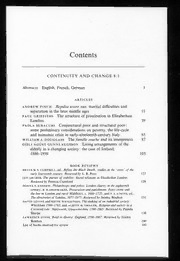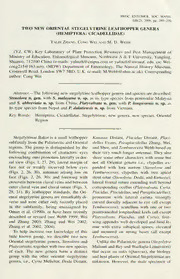
Turning Relationship Ghosts into Ancestors PDF
Preview Turning Relationship Ghosts into Ancestors
‘Turning Relationship Ghosts into Ancestors’ The use of intersubjective systems theory in navigating relational trauma states in couples therapy DAVID SLATTERY Dip. H.I.P. M.A. Post-Qualifying MA in Humanistic and Integrative Psychotherapy Validated by Middlesex University 2006. Contents. Introduction (p5-10). Chapter One: ‘Literature Review’ (p11-21). Chapter Two: ‘Research Methodology’ (p22-27). Chapter Three: ‘Turning Relationship Ghosts into Ancestors’ (p28-35). Chapter Four: ‘Relational Trauma States and how to Survive Them!’ (P36-44). Conclusion (p45-47). Appendix (p48-49). Bibliography (p50-61). 2 ‘Atticus was right. One time he said you never really know a man until you stand in his shoes and walk around in them.’ Harper Lee ‘Experience is for me the highest authority. The touchstone of validity is my own experience.’ Carl Rogers ‘A defining feature of our thinking lies in our not assigning any greater intrinsic validity to the analyst’s world of reality than to the patient’s.’ Robert Stolorow and George Atwood 3 Acknowledgements. I have had a growing interest in the ‘bits around the edge’ of therapy, the quick exchange on the stairs, the subtle look that changes as clients comes in the door and the general ‘parapraxes’ (Freud ’01) and nuances of our exchanges. In parallel I have had a similar growing interest in the bits around the edges of books: the preface, the after word and, that give-away of the emotional journey of the author, the acknowledgements. When a writer speaks about how much colleagues or family or friends have meant to them in their work it now has more of an emotional resonance for me, having been on my own journey. In terms of the process of writing I have felt very supported by the PQMA group: Tricia Scott (as tutor), and Jane Purkiss, Tree Staunton and Ailin Kelleher (fellow writers). As teaching colleagues at the Bath Centre for Psychotherapy and Counselling, Bath, UK: Jane, Tree, Tricia and Judy Ryde have also been part of my development as a tutor, of which helping students with research and writing is a significant part. An ongoing e-mail dialogue has expanded my thinking about theory during this time in particular with John Kirti Wheway, my friend and colleague, who has supported my efforts to become more familiar with intersubjective systems theory, and with whom I’ve had some hilarious exchanges that have kept my spirits up. During the writing of this MA I have, along with Jill Gabriel, founded the Centre for Relational Couples Therapy in Bath, UK. Although Jill has not been involved directly with this writing my work with her has influenced my thinking about couples enormously. Finally my thanks go to Holly, my wife, who has supported this writing from the beginning with her generous interest, and help in creating space in which I could write. Also to my children Sophie, Lizzie and Harry whose innocent interest in ‘Dad’s writing thing’ (which refreshingly never lasted more than a minute!) has kept me grounded. This writing has helped give birth to a new identity, that of a fledgling writer, researcher and academic for which I am immensely grateful. 4 Introduction. The Struggle. ‘There’s a secret that real writers know that wannabe writers don’t, and the secret is this: It’s not the writing part that’s hard. What’s hard is sitting down to write. What keeps us from sitting down is Resistance.’ (Pressfield 2002: introduction). ‘Sitting down to write’ has been a huge struggle and a powerful reflection of the process of being with ‘relational trauma states’. I have spent days and days in a ‘resistant’ state, sitting at my computer checking out how David Beckham’s cruciate ligament problem is coming along, or how some obscure University cricket team are doing. Hours and hours pushing papers around, adding another book to my potential bibliography (size matters when you are anxious!). One time Holly, my wife, came back, after taking the kids out to give me some space to write, and sniffed the air, ‘Do I smell procrastination?’, it was furniture polish, I had (for the first time in living memory) been polishing my desk! Some of this difficulty can be traced way back to my early experiences of reading and writing. As long as I can remember I have had a conviction that I am not really creative: I can’t read, I can’t write and I can’t draw. Also as long as I can remember I have been known to be a good participant in class, but not good at homework, essays and exams. In short I am a practical, participatory kind of person, not an academic. This identity followed me into psychotherapy where I was a very confident starter and soon had a pretty full practice. I considered myself good at the job, but lousy at theory. Faced with producing a dissertation and case study in order to qualify I finally, in my early 30’s, had engineered for myself a clash between my ancient introjected(1) (Perls 1947) sense of self that told me I was not able to be creative academically and a newer sense of self that was finding pleasure, excitement and a sense of authority through exploring my self through the medium of academic study. This ‘success’ was followed by a growing reputation as an examiner of counselling and psychotherapy papers and gradually becoming more senior as a tutor at the Bath Centre for Psychotherapy and Counselling where I came 5 to a developing integration of theory through the experience of teaching it to others. So my idea of myself has been gradually changing through having different experiences in the present. This is an important idea in therapy whether you are having a different experience in the present with the therapist: a ‘reparative’ experience, or are re-experiencing something differently through an unresolved state being evoked. In couples therapy there is a way in which this is particularly important between the couple (and less important between the therapist and the couple), as there are often many opportunities each day for the couple to have experiences that are creative or destructive for their relationship. With the therapist the contact is often only weekly. Relational Couples Therapy. This describes a way of working with couples that draws on relational theory: contemporary psychoanalysis, dialogical gestalt, (and in my case a mytho-poetic narrative). It describes my theoretical stance and the main therapeutic milieu, the relationship between the couple and myself. ‘…if one of the two commits adultery, the person who is most hurt, who receives the deepest cut, however incredible it may seem, is not the other person, but that other ‘other’ which is the couple….’ (Jose Saramago 1999:50) This extraordinary statement from Saramago’s novel ‘All The Names.’ eloquently describes something we are not used to conceptualising and making part of our everyday awareness, but have experience of all the time. We often have a clear sense of what couples are like, how they operate and how we feel when we have been in contact with them. He is not talking about one person, or the other. He is not even talking about the sum of two personalities, two personalities reacting to each other. He speaks of ‘the other ‘other’’. Of a wound happening to a relationship. ‘A couple relationship is a systemic relational phenomenon; it is co-created by the couple out of their previous experience and current expectations and assumptions. It is unique... Two people, each with their own shape, come together to form a third shape, their ‘relationshape’. This shape holds the potential for individual growth, intimacy, connection and transformation. However, when couples come to therapy they 6 are often struggling with deep disappointment. They may have feelings that they do not understand and they may not know that difference often needs to be defined by conflict.’ (Slattery and Gabriel 2006). ‘Conflict’ here means a conscious expression of difference, an experience that can be mutually strengthening if the aim is to communicate rather than attack or destroy. For people who have problems with difference, and given the amount of war and strife and ‘hate crime’ that exists in the world it would suggest that that is the majority of us, a straightforward expression of difference has not been possible and so some other way of being has been developed. An existence that is not ‘simple’ but rather ‘perverse’. An accumulation of such experience in an individual will lead to a persistent state of trauma. When this occurs in a couple I have come to know it as a ‘relational trauma state’. Often couples arrive in therapy in a last ditch attempt to save their relationships having endured years of frustration, dissatisfaction and loneliness. For the couple the situation they are in often feels hopeless and deeply entrenched and the behaviour of the other deeply offensive and ‘wrong’ (in a reified sense). This relational trauma state can put enormous pressure on the therapist to find ‘the answer’; to provide some ‘hope’ where none seems to exist, except perhaps unconsciously (Casement 1985/1990). In researching for his book ‘The Family Crucible’ Augustus Napier describes this process, ‘Digging into these interviews was fascinating, but it was also frustrating. I quickly became enmeshed in a nightmare of complexity as I tried to describe the nuances of voice, the peculiarities of phrasing, the intricate sequence of events in the interviews. I wrote fifty pages about a single hour of therapy and felt that I had treated the material superficially. (Napier and Whitaker 1978 p. xii). This process of intensity of ‘nightmare complexity’ reflects not just the nature of writing about relational couples therapy but also of being a therapist in this particular environment. A couple is a complex system. A couple with a therapist is an even more complex system including three individual subjectivites aswell as several relationship dynamics and when there are stormy emotions around, as in a relational trauma state, it can be very disorientating and disturbing. 7 ‘Our task as couples therapists is to try and survive that difficulty with the couple and in so doing find some understanding together. The powerful forces unleashed by relationship disharmony can be very disturbing for therapist and couple. However it is precisely these knots that we can get into together that hold the solution.’ (Slattery and Gabriel 2006). In my work with couples I feel held and helped enormously by a mytho-poetic view of relationship, where the worlds of poetry, story and imagination intertwine to provide a rich tapestry of ideas and images to guide the work. This for me is a kind of backdrop to the extraordinary drama that is couples therapy. Close up the philosophical and clinical insights from self psychology, dialogical gestalt and in particular intersubjectivity systems theory offer me theoretical help in understanding processes between couples, and between myself and the couple. It is this latter area that I am concentrating on most in this study. What theory can help in understanding the contribution of the therapists’ subjectivity? Chapter 1: ‘Literature review’. I begin by explaining my understanding of what has been said by other theorists about working with couples and how what I have to say is distinct from, and connected to, what has come before. I am also considering what theory, primarily written for individual psychotherapy, may translate into relational couples therapy. Chapter 2: ‘Research methodology’. Here the rationale for researching and writing in the particular way I have, primarily using a qualitative method (Rowan and Reason 1981 and Moustakas 1990), is explored. This includes an account of my research process. Chapter 3: ‘Turning relationship ghosts into ancestors’. Here I look at influences on the couple-therapy from the past (both for the couple and the therapist), and show how an appreciation of the value of descent can help the therapist bear this process with the couple. ‘Ghosts’ come in many forms and seem to be preserved as part of a relational trauma state until they can be ‘put to rest’. 8 In all these instances the couples presenting state was a kind of holding structure. A way of being that kept them in a place where they were not fulfilling their potential together, but it was safe. They had found a ‘modus operandi’, a way of surviving, of managing, and, from my standpoint, a state of nascent potential. However if the core relationship dynamics are going to change most couples they will need to go through a kind of ‘descent’. ‘”The Descent” is a mythological term for the period during and after a powerful event in which the ego has been overwhelmed by a wave from the unconscious. Energy that is normally available to consciousness falls into the unconscious so the person is often disoriented exhausted, perhaps in a trance state. This is known as journeying into the underworld, a state in which creative energies are going through transformations that the unaware ego may know nothing about until big changes begin to happen in the outer world or the studio begins to shine with totally new pictures, new music, or new sculpture.’ (Bly and Woodman 1998:177) The notion of ‘descent’, as postulated here by Woodman, is one that applies to individuals. In this dissertation I am concerned with couple relationships and so would consider a joint descent to be part of a ‘relational trauma state’. Further than this a descent has to be undertaken by the therapist and the couple. From an intersubjective standpoint (Stolorow and Atwood 1993) the subjectivity of the therapist is not just present, but potentially very helpful as part of the therapy. Stolorow (2005) describes a descent in his relationship with his partner Julia Schwartz, which I explore in some detail. Chapter 4: ‘Relational trauma states and how to survive them’. What I am calling ‘relational trauma states’ are tightly interwoven, mutually serving, intersubjectively created and, in their pain and perversity, utterly reliable relationship states. They have a strong narrative and are easily experienced, both by the couple and those who come into contact with them, as a reified relationship style constructed as they are from experiences of trauma. According to the founders of intersubjectivity theory Stolorow and Atwood, ‘It cannot be overemphasised that injurious childhood experiences-losses, for example-in an of themselves need not 9 be traumatic (or at least not lastingly so) or pathogenic, provided that they occur within a responsive milieu (Shane and Shane ’90). Pain is not pathology. It is the absence of adequate attunement and responsiveness to the child’s painful emotional reactions that renders them unendurable and thus a source of traumatic states….’ (1992:54). So it is not the event, but the response to the event, that causes the trauma. And in a relational context this can form a ‘relational trauma state’. A state that is created by the individual experience and expectation of the partners in a relationship that holds both the experience of trauma and the hope of resolution. ‘Therapeutic impasse’ is an aspect of intersubjective systems theory that is helpful with working with these trauma states because it considers that stuckness in the therapy is rooted in the interaction of subjectivities between patient and therapist, (Stolorow and Atwood 1992:103-122). This helps to take the pressure off the couple and undermines the idea that ‘someone is to blame’, and so is very affirming of the idea of difficult states being created relationally. I will show how working with ‘therapeutic impasses’, which has been established in individual therapy by Stolorow and Atwood 1992 and begun to be explored in couples therapy by Trop 1994 and 1997, Alexander and Van Der Heide 1997 and Shaddock 1998 and 2000, helped resolve a relational trauma state in my work with Alan and Mary. Another aspect of intersubjective systems theory that is helpful is that of ‘organising principles’: a phrase used by George Atwood and Robert Stolorow in their ground breaking book ‘Structures of Subjectivity’ to describe a, ‘patterning and thematizing of events that uniquely characterize…personal reality.’ (Atwood and Stolorow 1984:36). Again we can see how in working with a couple this theory helps to ground the experience by trying to notice and work with individual subjectivities. Chapter 5: ‘Conclusion’. Here I summarise the study, review where the research has taken me and consider where this area of research might go next. 10
Description:The list of books you might like

Corrupt (Devil's Night #1)

Shatter Me Complete Collection (Shatter Me; Destroy Me; Unravel Me; Fracture Me; Ignite Me)

$100m Offers

The Sweetest Oblivion (Made Book 1)

Continuity and Change 1993: Vol 8 Table of Contents

Geoderma 2006: Vol 136 Table of Contents

Nutrient Composition of Rations for Short-Term, High-Intensity Combat Operations

To Sail Beyond the Sunset

Sustainable Management of Mining Operations

Desert Notes / River Notes

C-130 Airlift (USAF)

CARACTERIZACIÓN DE POLIFENOLES Y SU ACCIÓN SOBRE SIRTUÍNAS EN MODELOS DE

News from FormCalc and LoopTools

C anton © bser U cr

Stimme und Sprache

C anton €>b£crUer
![Quantenmechanik [Quantum Mech - IN GERMAN] book image](https://cdn.pdfdrive.to/media/content/thumbnails/c339d3e1-fb21-49fc-9adc-8c827d6bafd0.webp)
Quantenmechanik [Quantum Mech - IN GERMAN]

Südtirol/Alto Adige/Südtirol

Two new oriental stegelytrine leafhopper genera (Hemiptera: Cicadellidae)

This is Not a Game: A Guide to Alternate Reality Gaming

Diabetes

What Fraction of Boron-8 Solar Neutrinos arrive at the Earth as a nu_2 mass eigenstate?

Killing Custer

